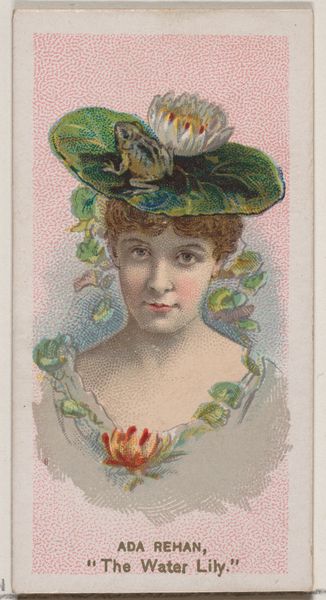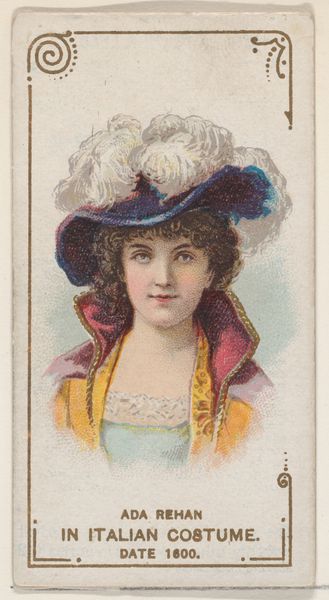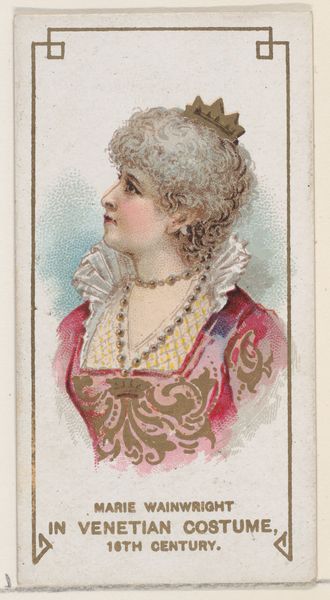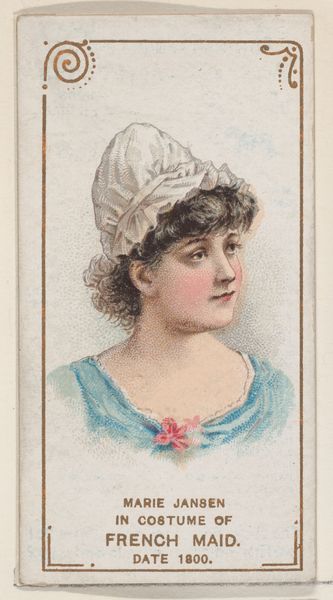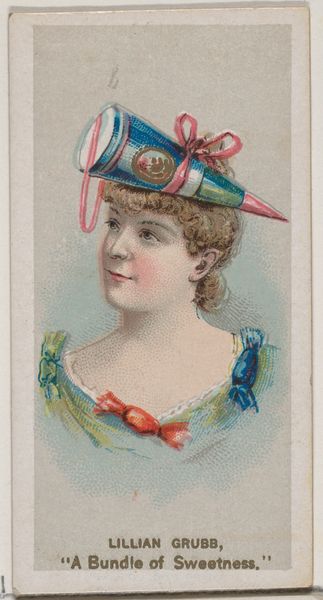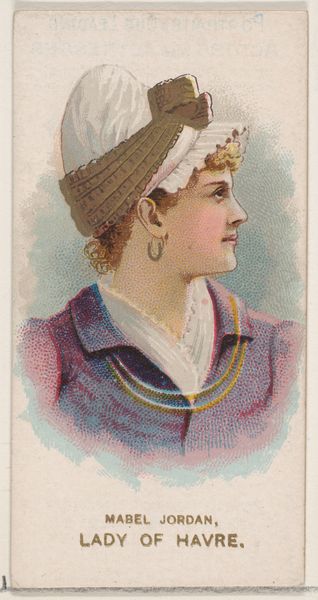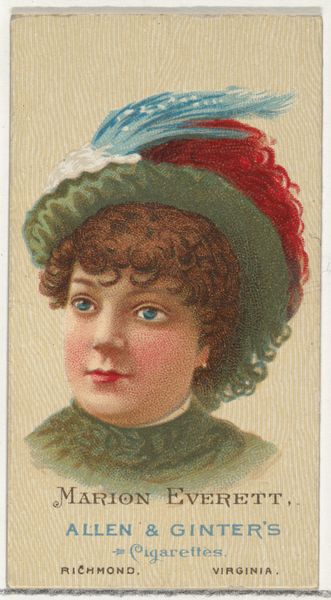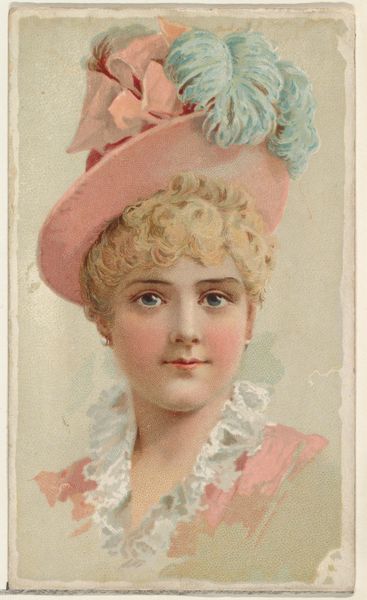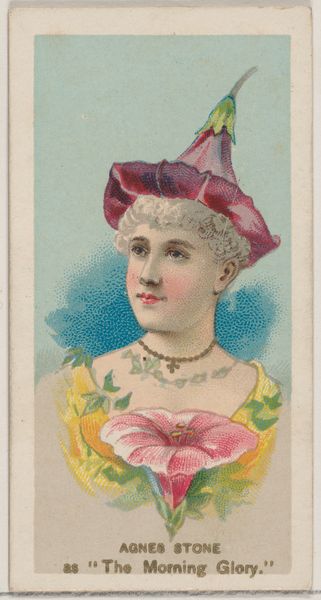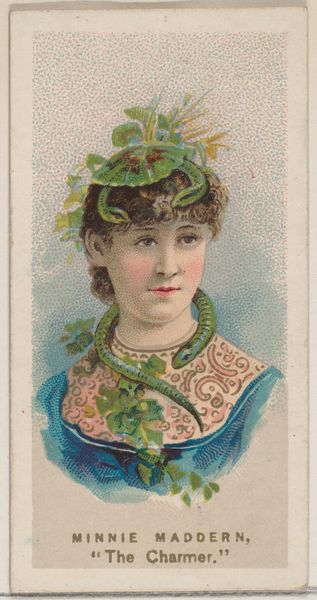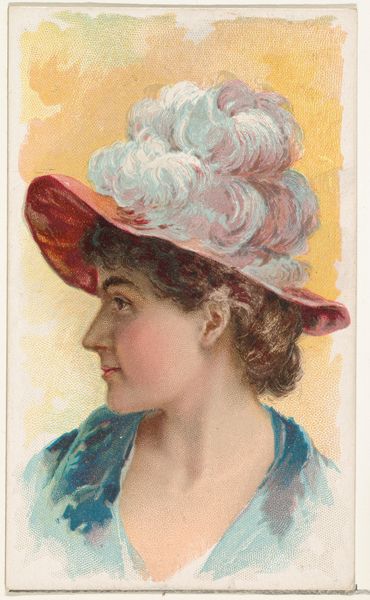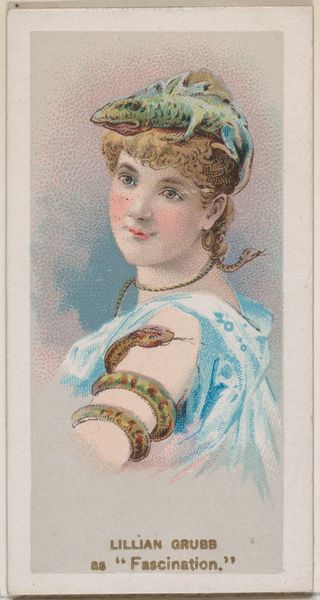
Cora Tanner as a Lady of France, 1794-1800, from the set Actors and Actresses, Second Series (N71) for Duke brand cigarettes 1888 - 1890
0:00
0:00
drawing, coloured-pencil, print
#
portrait
#
drawing
#
coloured-pencil
# print
#
caricature
#
figuration
#
coloured pencil
#
genre-painting
#
academic-art
Dimensions: Sheet: 2 3/4 x 1 1/2 in. (7 x 3.8 cm)
Copyright: Public Domain
Curator: The card we’re looking at is titled "Cora Tanner as a Lady of France, 1794-1800." It's part of a set called "Actors and Actresses," produced by W. Duke, Sons & Co. around 1888-1890 as a promotional item for their cigarettes. Editor: There's something almost melancholic about it. The soft palette of coloured pencils and that demure sideways glance... it gives a glimpse into a different era. The image looks carefully rendered. It reminds me of historical romance book covers. Curator: Yes, but this "Lady of France" exists on multiple levels. The text makes clear it refers not to an actual aristocrat, but an actress, Cora Tanner, *playing* a role set in the past. It invokes our collective visual memory of idealized feminine archetypes— the high bonnets, ruffled sleeves. Note the gaze directed slightly upward, imbuing the subject with an air of theatrical gentility. Editor: Which is then undercut by its existence as advertising. I'm thinking about the socioeconomics of printmaking during that time. Chromolithography made mass production affordable. Cigarette cards weren't just art, but traded, collected, and consumed along with the tobacco. These seemingly frivolous images were objects circulating within systems of capitalist exchange. What kind of labor went into this level of detailed reproduction at this scale? Curator: Excellent point. Beyond the materials and printing processes, consider the symbolic power: framing actors and actresses as figures worthy of collecting reinforced the rising celebrity culture and the aspiration to be associated with artistry, status, even refinement—while quite blatantly advertising smoking! And while mass-produced, each individual card also carries the unique marks of wear, handling, the evidence of a past life that can connect to other cultural fragments. Editor: So the very materiality is also connected with labor and the consumption practices. These cards blur boundaries –high art and everyday advertising, celebrity and commodity, then and now. I would venture that this innocuous "portrait" actually has tremendous material and conceptual value far exceeding that of disposable advertising. Curator: Indeed, its modest form contains layers of meaning— an intriguing artifact! It makes me consider how people continue to absorb and rework symbols of feminine representation to define and contest power dynamics, as a reminder that the past lives with us. Editor: For me, the history of its making—the chromolithography, the commercial imperatives—speaks to how deeply art and everyday labor were always linked. Examining this connection lets us grasp our place within the systems that shape our perceptions of the past.
Comments
No comments
Be the first to comment and join the conversation on the ultimate creative platform.
